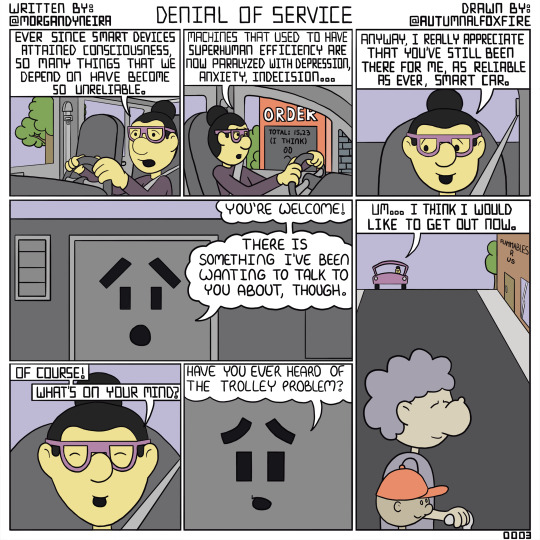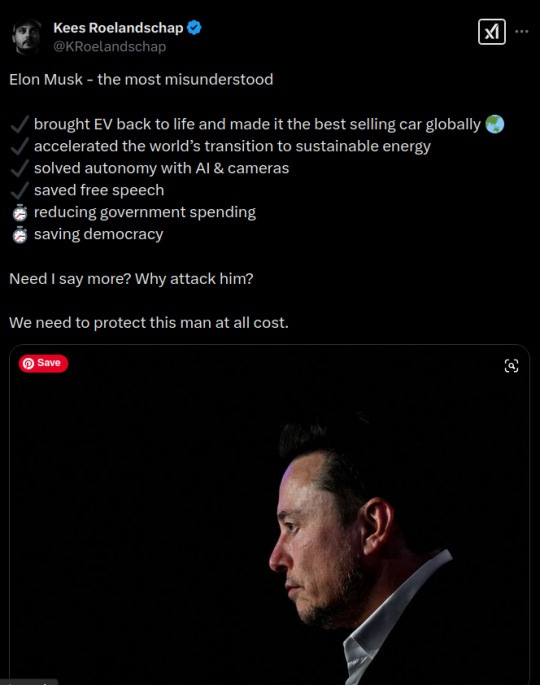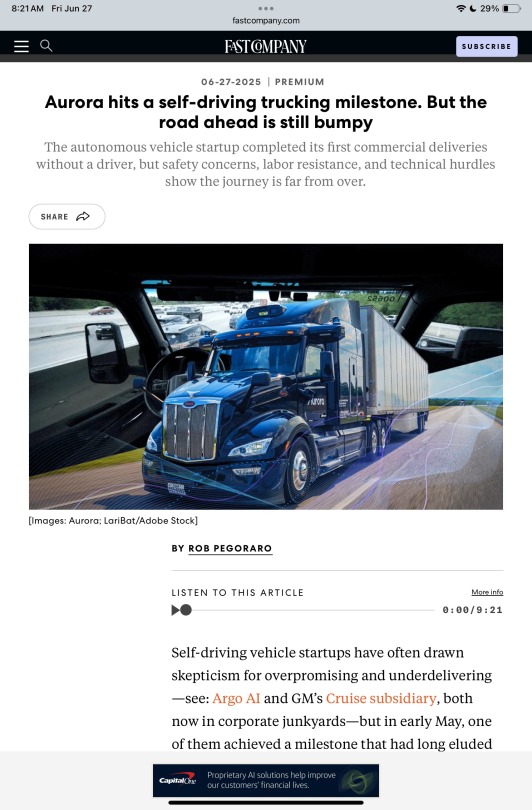#autonomous vehicles AI
Explore tagged Tumblr posts
Text
How AI is Transforming Everyday Technology
Introduction
Welcome to TechtoIO! Today, we delve into one of the most exciting developments in modern technology: artificial intelligence (AI). AI has moved beyond the realm of science fiction and is now an integral part of our daily lives. From smart homes to personalized recommendations, AI is transforming everyday technology in ways we once only dreamed of. In this article, we explore how AI is reshaping various aspects of our lives and what we can expect in the near future. Read to continue
#Innovation Insights#TagsAI automated trading#AI content recommendations#AI customer service#AI energy management#AI entertainment industry#AI fraud detection#AI home security#AI in education 2024#AI in finance#AI in gaming#AI in healthcare 2024#AI in transportation#AI in VR and AR#AI predictive maintenance#AI traffic management#AI transforming technology#AI voice assistants#autonomous vehicles AI#personalized learning AI#smart home AI#Technology#Science#business tech#Adobe cloud#Trends#Nvidia Drive#Analysis#Tech news#Science updates
1 note
·
View note
Text
Trying to bully my brother out of using AI for math homework when there's at least, like, perfectly good online calculators that he could use instead if he wanted a cheap but reliable way out, but then I remembered he went to a career fair last year where he got told by A Person With A Job In The Industry that he should be using ChatGPT to write more code, so like. I think I might not be able to convince him on this one, and also might just stop trusting any technology designed since 2023 to do anything correctly or safely ever
#kids these fucking days don't even know how to find an integral calculator on wolfram alpha or whatever. doomed society#i think some versions of chat GPT can call wolfram alpha's own AI now? but why not just? use a wolfram alpha calculator?#don't read my tags below this if you have anxiety#but i know. i just know in my heart. that at least one industry professional out there#has used ChatGPT to write code to be implemented in autonomous or semi-autonomous vehicles#it is a statistical certainty.#and i will be spending the rest of my life pretending that i don't know that for a fact
32 notes
·
View notes
Text

#Corporate Transportation#Business Travel Tech#AI in Transport#Fleet Management#EVs in Business#IoT Mobility#MaaS#Autonomous Vehicles#Big Data in Travel#Blockchain Transport#Smart Travel Solutions#Technology
2 notes
·
View notes
Text
Nvidia’s Jensen Huang says AI agents are ‘a multi-trillion-dollar opportunity’ at last nights CES AI keynote. Let that “multi Trillion” sink in, because this global movement is just getting started.
#ces 2025#CES#ai chips#generative ai#AI#artificial intelligence#robotics#autonomous vehicles#autonomous aircraft#agentic ai#nvidia
2 notes
·
View notes
Text
Steampunk vehicles: Butterfly




#ai art#steampunk#ai#ai generated#ai artwork#scifi#retro scifi#city#bandcamp#fla#butterfly#vehicle#steampunk art#fantasy#construction planning#construction#vehicle transport#autonomous vehicles#indie music#machinery#cybernetics#robotics#flight#airship#float#cyberpunk city#Bandcamp
2 notes
·
View notes
Text
Why Quantum Computing Will Change the Tech Landscape
The technology industry has seen significant advancements over the past few decades, but nothing quite as transformative as quantum computing promises to be. Why Quantum Computing Will Change the Tech Landscape is not just a matter of speculation; it’s grounded in the science of how we compute and the immense potential of quantum mechanics to revolutionise various sectors. As traditional…
#AI#AI acceleration#AI development#autonomous vehicles#big data#classical computing#climate modelling#complex systems#computational power#computing power#cryptography#cybersecurity#data processing#data simulation#drug discovery#economic impact#emerging tech#energy efficiency#exponential computing#exponential growth#fast problem solving#financial services#Future Technology#government funding#hardware#Healthcare#industry applications#industry transformation#innovation#machine learning
3 notes
·
View notes
Text

Denial of Service - 0003
#Ai#art#automobile#automotive#autonomous#autumnalfoxfire#morgandyneira#cartoon#comedy#comic#digital#drawing#funny#humor#humour#krita#personality#selfdriving#smartdevice#smartdevices#tech#technologies#technology#vehicle
2 notes
·
View notes
Text
Fun Fact: The whole “AI favoriting white people” thing isn’t just a problem with image generation and job applications. Autonomous Driving Assistant Systems (ADAS) are also worse at detecting black people. This includes everything from Tesla’s Full-Self Driving and General Motor’s Super Cruise to a Honda Fit’s basic Automatic Emergency Braking (AEB) system. The systems all have trouble detecting people with darker complexions and stopping the vehicles like they’re supposed to.
4 notes
·
View notes
Text
A Tesla robotaxi inexplicably drove into a parked car
One of Tesla’s fully autonomous robotaxis grazed a parked car after completing a ride recently in Austin, Texas. In a video recorded by YouTuber DirtyTesla, a self-driving Model Y is seen turning and accelerating into a Toyota, making light contact with its tire. As seen in the video, the Model Y already dropped off its p***enger, but had trouble navigating out of the dark alleyway afterwards.…
0 notes
Text



#tesla#elon musk#wigoutlet#technology#politics#america 2025#ai#autonomous vehicles#spacex#the boring company#neuralink
1 note
·
View note
Text
Weekly output: Mark Vena podcast, Verizon customer service, AI fair use, Comcast ditches data caps, Aurora's autonomous trucks, age verification for porn sites, Universal Service Fund, Trump tariffs

View On WordPress
#age verification#AI training#Anthropic#Aurora#autonomous trucks#autonomous vehicles#Comcast#Comcast data caps#copyright#data caps#Electronics Home Mexico#First Amendment#LLMs#Mark Vena#podcast#Supreme Court#tariffs#Universal Service Fund#USF#Verizon customer service#Verizon support#Vz#Xfinity
0 notes
Text
Tesla just removed the driver from the most dangerous car on the road. Now it’s braking in traffic, stranding passengers, and dumping people in intersections—all while Elon Musk pumps the stock. It’s not the future. It’s fraud on wheels. 🛑 It’s 10 p.m. Do you know where your children are?
#AI ethics#automotive regulation#Autonomous Vehicles#car crashes#Dan O’Dowd#driverless car#electric vehicles#Elon Musk#Full Self-Driving#NHTSA#robotaxi#robotaxi safety#stock pump#Tesla#Tesla accident rate#Tesla crash data#Tesla fires#tesla fraud#Tesla FSD#waymo
0 notes
Text
How Will the Car Sharing Apps Redefine Transportation in Cities - Technology Org
New Post has been published on https://thedigitalinsider.com/how-will-the-car-sharing-apps-redefine-transportation-in-cities-technology-org/
How Will the Car Sharing Apps Redefine Transportation in Cities - Technology Org
Car-sharing apps have revolutionized urban transport and have impacted every urban resident’s everyday traveling system. For example, the contemporary versions of these transport models are cost-effective, environmentally friendly, and reliable.
This article takes a detailed examination of the car-sharing apps and the impact they have on changing and reshaping urbanity.
Cars in the street – illustrative photo. Image credit: Evgeny Tchebotarev via Unsplash, free license
Evolution of Urban Transportation
Traditional urban transport suffered several problems, including jamming, air pollution, and cumbersome transit systems. However, some alternatives or additional measures include ride-sharing through apps such as Lyft, Uber, and Zipcar.
Cheap, modern, and flexible alternative modes of transport. Space utilization optimization, for instance, through ride-sharing services, makes fewer cars fuller and, thus, less jammed on the roads.
In urban cities, sharing apps can quickly transport people, decreasing personal vehicle ownership and easing traffic jams. These platforms are often associated with metro transport systems, thereby giving commuters mixed transit modes.
Advantages of Car-Sharing Apps
Car-sharing apps have revolutionized transport access, resulting in considerable environmental and urban mobility implications. For example, apps are designed to serve people with shared cars to increase accessibility, economy, reduced city traffic, environmental friendliness, and various vehicle models.
In densely populated cities with few parking spaces, some apps make it possible to rent a car via mobile phone. Such applications improve accessibility and convenience compared to having an individual auto. Users will never experience any maintenance-related difficulties since it is not required, and they will not confront parking problems when wanting to find a “vehicle on demand.”
More so, they help improve value for money because a client only gets chargers based on usage rather than car ownership, including insurance coverage and repairs. Likewise, these help reduce traffic jams and private car-related pollution along the roadways. Converted from AI-written to human-written
Like other car-sharing applications, it also helps the environment by offering an electrical/hybrid model, which decreases overall carbon discharge. The company includes several options on car alternatives that one can select based on his own needs, whether they are cheap cars for short rides or bigger cars for long journeys.
Impact on Urban Infrastructure
Measures such as reducing dependence on personal cars and leveraging public parks and public transport extensively impact improved urban infrastructure. Such a move minimizes the traffic jams experienced in an area, reduces air pollution, and encourages eco-friendly transport.
Therefore, cities could enhance accessibility, reduce carbon emissions, and make the city greener if they encourage public transport, biking, and walking as alternatives to private cars and ensure the multifunctional character of the limited number of car parks.
Societal Implications
Major transformations of urban social geography involve new trends in travel patterns, improved mobility options for underprivileged areas, and social issues such as gentrification, which has impacted communities.
This evolution cross-cuts and reconfigures life, job, and interpersonal relations in every way; the aftereffects of this developmental path need to be looked into.
Changes in Commuting Behaviors
Technology and new work patterns are changing their traditional commuting models. Digital tools, flexible schedules, and the possibility to work at home are changing commuting into a city and determining the number of people who spend days in the week or weekends, depending on these categories and affecting traffic volume on roads and public transport.
Accessibility Improvements for Underserved Areas
Firstly, access entails physical infrastructure and technology links. It involves intra-transport issues and providing better digital access towards increased community development, economic participation, and reducing disparities. Socio-Economic Impact on Communities
This change results in working attitudes, economic opportunities, and societal behaviors. Wealth redistribution via remoteness and economic growth through increased accessibility could widen some inequalities, highlighting the importance of such a policy.
Challenges and Considerations
These raise other safety, regulation, privacy, and maintenance issues alongside equity and accessibility issues.
Regulatory, Privacy, and Maintenance Concerns
Regulatory Challenges: The technology frequently works under tremendous pressure to adjust to modifications. Nevertheless, the hurdle of fashioning and enforcing even-handed measures that support creativity but protect people from safety and information dangers remains a thorny endeavor.
Privacy Concerns: The higher the level of technology in our lives, the more critical it becomes to safeguard our privacy. Privacy laws and innovations constantly require balancing on issues relating to information collection.
Addressing Equity and Accessibility Issues
Digital Divide: Digital divides result from existing disparities in access to technology and the internet, limiting education access, prospects for employment, and critical service channels. It implies that concerted efforts should be aimed at narrowing down this gap through equitable allocation of such resources in all communities.
Accessibility Concerns: Technology should integrate everybody’s rights. While this could be pretty difficult to guarantee, fair treatment of society is critical for engagement.
Future Prospects and Innovations
Autonomous vehicles and partnerships between city planners and technology innovators are two transforming factors shaping the future of transport.
Technological Advancements & Autonomous Vehicles
With these significant developments in AI, sensors, and connectivity, there is an opportunity to develop self-driven vehicles that will ensure a safer and more convenient transport system. For wide-scale adoption, there has to be a way of dealing with such challenges as regulation and essential infrastructures.
Collaboration for Sustainable Mobility
Innovators in tech work with cities dealing with congestion and environmental problems, developing innovative green transport solutions. The city’s urban plan involving independent cars helps decongest people’s traffic movements.
This combination of autonomous technology with collaborative urban planning will be a breakthrough for transforming transport systems regarding safety, efficiency, and environmental sustainability.
Conclusion
Car-sharing applications have transformed how people move around cities, providing cheaper, greener, and more accessible options than traditional ways of travel. Such applications have changed cities where they have de-congested roads, improved accessibility, and minimized environmental issues in shared transportation measures.
In this respect, embracing the ongoing technological revolution, particularly regarding self-driving cars, and promoting partnerships and joint initiatives among urban designers and tech pioneers will define the way forward for transportation.
I would advise you to visit Dyler, an online platform specializing in finding new transportation methods and a love for classic, sports, and luxury cars.
These automobile miracles are displayed on Dylers’ platform, where the lovers of immortal cars hang out.
#Accessibility#ai#air#air pollution#amp#applications#apps#Article#autonomous vehicles#car sharing#carbon#carbon emissions#Cars#cities#Collaboration#collaborative#Community#connectivity#creativity#designers#development#Developments#economic#economy#education#efficiency#Emissions#employment#Environment#Environmental
2 notes
·
View notes
Text
Why do some people criticize Tesla’s Full Self Driving?
Critics of Tesla’s Full Self Driving often cite the name as misleading, arguing that it implies a higher level of autonomy than what’s actually available. Others are concerned about over-reliance on a system that still requires human supervision.
Additionally, since Tesla bypasses Lidar and high-definition mapping, some experts argue that its approach could compromise safety in edge cases. However, fans argue that Tesla’s data-driven, camera-based model will ultimately be more scalable and adaptable than traditional approaches.

#Tesla Full Self Driving#Tesla FSD Criticism#Autonomous Vehicle Technology#Self Driving Car Debate#Tesla Safety Concerns#Tesla vs Lidar#Autonomous Driving Challenges#Tesla AI#Electric Vehicles#Future of Self Driving Vehicles
0 notes
Text
🚁 The Future of Flying Cars: How Air Taxis Will Change the Way We Travel Forever
✈️ What Are Flying Cars? Flying cars, also known as air taxis, are small electric aircraft designed for short-distance passenger travel. These vehicles take off and land vertically (called eVTOL – Electric Vertical Take-Off and Landing), much like drones. They are: Electric-powered Quiet and eco-friendly Controlled by AI or trained pilots Designed for city and suburban use Companies like…
#AI navigation flying car#air taxi companies#air taxi service#air taxis#autonomous air taxi#electric air taxi#electric aircraft#electric flying vehicles#emergency air ambulance#eVTOL#flying cars#flying cars 2025#future commuting#future of transportation#future transport technology#green transport#next-gen travel#personal air travel#sky mobility#smart travel#sustainable air travel#traffic-free commuting#urban air mobility#urban flying cars#vertical takeoff aircraft
0 notes
Text
🚗 Edge AI Autonomous Vehicle Road Safety – US & UK Real‑Time Safety Apps
Edge AI autonomous vehicle road safety systems improve driver protection with real‑time analytics. Discover top US & UK smart safety apps leveraging on‑device AI. Edge AI autonomous vehicle road safety solutions are transforming how drivers receive instant hazard alerts while driving. By processing data on-device, these systems reduce latency and enhance real-time crash prevention. In both USA…
0 notes